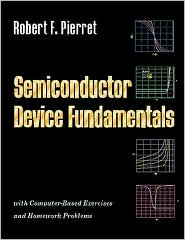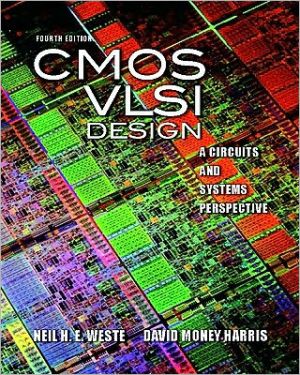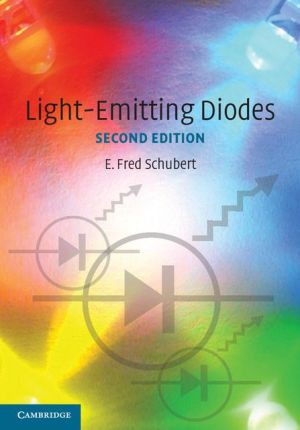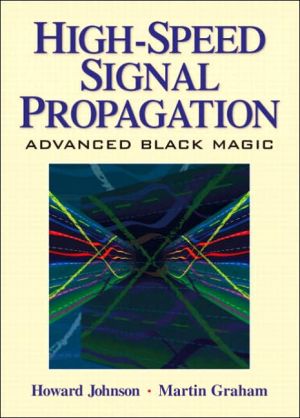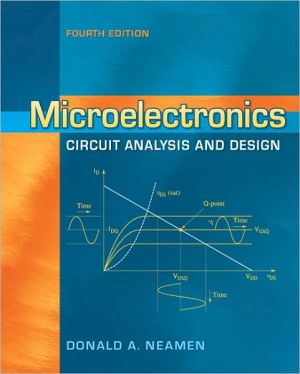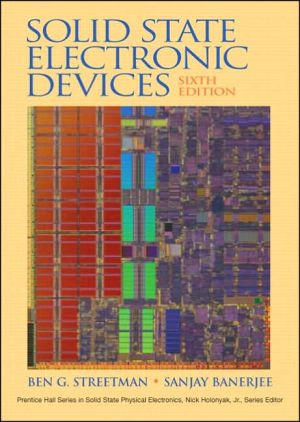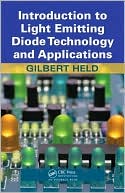Semiconductor Device Fundamentals
From one of the principal authors of the Addison-Wesley Modular Series on Solid State Devices comes a first: an authoritative and innovative text for the undergraduate course, Semiconductor Device Fundamentals by Robert F. Pierret of Purdue University. By incorporating computer-based exercises and homework problems and providing interesting supplementary readings, the author gives students a meaningful and challenging experience in their first substantial encounter with semiconductor...
Search in google:
Special Features Computer-based exercises and homework problems -- unique to this text and comprising 25% of the total number of problems -- encourage students to address realistic and challenging problems, experiment with "what if" scenarios, and easily obtain graphical outputs. Problems are designed to progressively enhance MATLAB -use proficiency, so students need not be familiar with MATLAB at the start of your course. Program scripts that are answers to exercises in the text are available at no charge in electronic form (see Teaching Resources below). Supplement and Review "Mini-Chapters" after each of the text's three parts contain an extensive review list of terms, test-like problem sets with answers, and detailed suggestions on supplemental reading to reinforce students' learning and help them prepare for exams. Read-Only Chapters, strategically placed to provide a change of pace during the course, provide informative, yet enjoyable reading for students. Measurement Details and Results samples offer students a realistic perspective on the seldom-perfect nature of device characteristics, contrary to the way they are often represented in introductory texts. Content Highlights Covers basic terminology, models, properties, and concepts associated with semiconductors and semiconductor devices. Provides detailed coverage of the internal workings of such "building-block" device structures as the pn junction diode, Schottky diode, BJT, and MOSFET. Includes coverage of a variety of additional devices such as solar cells, LEDs, HBTs, and modern field effect devices. Teaching Resources In-text Problem Information Tables after each chapter assist you in assigning homework. The tables rate end-of-chapter problems according to their difficulty, suggest credit or point weighting, and list the text section that must be completed prior to working the given problem. Program files of the MATLAB scripts associated with the computer-based exercises are available via ftp (ftp://ftp.mathworks/pub/books/pierret) or distributed free on disk by MathWorks, Inc. (both Macintosh and IBM-PC compatible versions) Crib-sheet-like equation summaries are included in the critical beginning chapters. A Solutions Manual with Instructor's Disk is available for both IBM-PC and Macintosh. Solutions Manual includes solutions to all end-of-chapter problems. Instructor's Disk contains MATLAB problem file solutions and a suggested day-by-day course outline. Booknews An undergraduate text on semiconductor devices that incorporates computer-assisted learning. Derived in part from Volumes I-IV of the Addison-Wesley Modular Series on Solid State Devices, more than half of the material is completely rewritten, and several supplemental sections and two additional chapters have been added. The new text also contains computer-based text exercises and end-of-chapter problems. Annotation c. Book News, Inc., Portland, OR (booknews.com)
\ Why another text on solid state devices? The author is aware of at least 14 undergraduate texts published on the subject during the past decade. Although several motivating factors could be cited, a very significant factor was the desire to write a book for the next millennium (a Book 2000 so to speak) that successfully incorporates computer-assisted learning. In a recent survey, members of the Undergraduate Curriculum Committee in the School of Electrical and Computer Engineering at Purdue University listed integration of the computer into the learning process as the number one priority. Nationally, university consortiums have been formed which emphasize computer-assisted learning. In January 1992, distribution began of the Student Edition of MATLAB, essentially a copy of the original MATLAB manual bundled with a low-cost version of the math-tools software. Over 37,000 copies of the book/software were sold in the first year! Texts and books on a variety of topics from several publishers are now available that make specific use of the MATLAB software. The direction is clear as we proceed into the second millennium: Computer assisted learning will become more and more prevalent. In dealing with solid state devices, the computer allows one to address more realistic problems, to more readily experiment with "what-if" scenarios, and to conveniently obtain a graphical output. An entire device characteristic can often be computer generated with less time and effort than a small set of manually calculated single-point values.\ It should be clarified that the present text is not a totally new entry in the field, but is derived in part from Volumes IIV of the Addison-Wesley Modular Series on Solid State Devices. Lest there be a misunderstanding, the latest versions of the volumes in the Modular Series were not simply glued together. To the contrary, more than half of the material coverage in the four volumes was completely rewritten. Moreover, several supplemental sections and two additional chapters were added to the Volumes IIV outline. The new text also contains computer-based text exercises and end-of-chapter problems, plus a number of other special features that are fully described in the General Introduction.\ In just about any engineering endeavor there are tradeoffs. Device design is replete with tradeoffs. Tradeoffs also enter into the design of a book. For example, a few topics can be covered in detail (depth) or lesser coverage can be given to several topics (breadth). Similarly one can emphasize the understanding of concepts or optimize the transmission of factual information. Volumes IIV in the Modular Series are known for their pedantic depth of coverage emphasizing concepts. While retaining the same basic depth of coverage, four "read-only" chapters have been specifically added herein to broaden the coverage and enhance the transmission of factual information. In the read-only chapters the emphasis is more on describing the exciting world of modern-day devices. Compound semiconductor devices likewise receive increased coverage throughout the text. There is also a natural tradeoff between the effort devoted to developing qualitative insight and the implementation of a quantitative analysis. Careful attention has been given to avoid slighting the development of "intuition" in light of the greatly enhanced quantitative capabilities arising from the integrated use of the computer. Lastly, we have not attempted to be all-inclusive in the depth and breadth of coveragemany things are left for later (another course, other books). Hopefully, the proper tradeoffs have been achieved whereby the reader is reasonably knowledgeable about the subject matter and acceptably equipped to perform device analyses after completing the text.\ The present text is intended for undergraduate juniors or seniors who have had at least an introductory exposure to electric field theory. Chapters are grouped into three major divisions or "parts", with Part II being further subdivided into IIA and IIB. With some deletions, the material in each of the three parts is covered during a five-week segment of a one-semester, three-credit-hour, junior-senior course in Electrical and Computer Engineering at Purdue University. A day-by-day course outline is supplied on the Instructor's Disk accompanying the Solutions Manual. If necessary to meet time constraints, read-only Chapters 4, 9, 13, and 19 could be deleted from the lecture schedule. (An instructor might preferably assign the chapters as independent readings and reward compliant students by including extra-credit examination questions covering the material.) Standard Chapters 12, 14, and 15, except for the general field-effect introduction in Section 15.1, may also be omitted with little or no loss in continuity.\ Although a complete listing of special features is given in the General Introduction, instructors should take special note of the Problem Information Tables inserted prior to the end-of-chapter problems. These tables should prove useful in assigning problems and in dealing with homework graders. When faced with constructing a test, instructors may also be interested in examining the Review Problem Sets found in the mini-chapters (identified by thumb tabs) at the end of the three book parts. The Review Problem Sets are derived from old "open-book" and "closed-book" tests. Concerning the computer-based exercises and problems, the use of either the student or professional version of MATLAB is recommended but not required. The in-text exercise solutions and the problem answers supplied to the instructor, however, do make use of MATLAB. Although it would be helpful, the user need not be familiar with the MATLAB program at the beginning of the book. The MATLAB problems in successive chapters make increasingly sophisticated use of the program. In other words, the early exercises and homework problems provide a learning MATLAB by using MATLAB experience. It is critical, however, that the user complete a large percentage of the computer-based exercises and problems in the first three chapters. The exercises and problems found in later chapters not only assume a reasonably competent use of MATLAB, but also build upon the programs developed in the earlier chapters.\ The author gratefully acknowledges the assistance of associates, EE305 students, the respondents to an early marketing survey, the manuscript reviewers, and Addison-Wesley personnel in making Book 2000 a reality. Deserving of special thanks is Ali Keshavarzi for arranging the author's sabbatical at Intel Corporation and for providing photographs of equipment inside the Albuquerque fabrication facility. Prof. Mark Lundstrom at Purdue University was also most helpful in supplying key information and figures for several book sections. Of the undergraduate students asked to examine the manuscript for readability and errors, Eric Bragg stands out as especially perceptive and helpful. The very conscientious manuscript reviewers were Prof. Kenneth A. James, California State University, Long Beach, Prof. Peter Lanyon, Worcester Polytechnic Institute, Prof. Gary S. May, Georgia Institute of Technology, Prof. Dieter K. Schroder, Arizona State University, and Prof. G. W. Stillman, University of Illinois at Urbana-Champaign. In recognition of a fruitful association, a special thanks to Don Fowley, the former editor at Addison-Wesley who enticed the author into writing the book. Last but not least, editor Katherine Harutunian is to be credited with smoothly implementing the project, and executive assistant Anita Devine with cheerfully handling many of the early details.\ \ Prof. Robert F. Pierret School of Electrical and Computer Engineering Purdue University\ \
I. SEMICONDUCTOR FUNDAMENTALS.1. Semiconductors — A General Introduction.General Material Properties. Crystal Structure. Crystal Growth.2. Carrier Modeling.The Quantization Concept. Semiconductor Models. Carrier Properties. State and Carrier Distributions. Equilibrium Carrier Concentrations.3. Carrier Action.Drift. Diffusion. Recombination — Generation. Equations of State. Supplemental Concepts.4. Basics of Device Fabrication.Fabrication Processes. Device Fabrication Examples.R1. Part I Supplement and Review.Alternative/Supplemental Reading List. Figure Sources/Cited References. Review List of Terms. Part I Review Problem Sets and Answers.IIA. PN JUNCTION DIODES.5. PN Junction Electrostatics.Preliminaries. Quantitative Electrostatic Relationships.6. PN Junction Diode — I-V Characteristics.The Ideal Diode Equation. Deviations from the Ideal. Special Considerations.7. PN Junction Diode — Small-Signal Admittance.Introduction. Reverse-Bias Junction Capacitance. Forward-Bias Diffusion Admittance.8. PN Junction Diode — Transient Response.Turn-Off Transient. Turn-On Transient.9. Optoelectronic Diodes.Introduction. Photodiodes. Solar Cells. LEDs.IIB. BJTS AND OTHER JUNCTION DEVICES.10. BJT Fundamentals.Terminology. Fabrication. Electrostatics. Introductory Operational Considerations. Performance Parameters.11. BJT Static Characteristics.Ideal Transistor Analysis. Deviations from the Ideal. Modern BJT Structures.12. BJT Dynamic Response Modeling.Equivalent Circuits. Transient (Switching) Response.13. PNPN Devices.Silicon Controlled Rectifier (SCR). SCR Operational Theory. Practical Turn-on/Turn-off Considerations. Other PNPN Devices.14. MS Contacts and Schottky Diodes.Ideal MS Contacts. Schottky Diode. Practical Contact Considerations.R2. Part II Supplement and Review.Alternative/Supplemental Reading List. Figure Sources/Cited References. Review List of Terms. Part II Review Problem Sets and Answers.III. FIELD EFFECT DEVICES.15. Field Effect Introduction — the J-FET and MESFET.General Introduction. J-FET. MESFET.16. MOS Fundamentals.Ideal Structure Definition. Electrostatics — Mostly Qualitative. Electrostatics — Quantitative Formulation. Capacitance-Voltage Characteristics.17. MOSFETs — The Essentials.Qualitative Theory of Operation. Quantitative ID - VD Relationships. ac Response.18. Nonideal MOS.Metal-Semiconductor Workfunction Difference. Oxide Charges. MOSFET Threshold Considerations.19. Modern FET Structures.Small Dimension Effects. Select Structure Survey.R3. Part III Supplement and Review.Alternative/Supplemental Reading List. Figure Sources/Cited References. Review List of Terms. Part III Review Problem Sets and Answers.Appendix A. Elements of Quantum Mechanics.Appendix B. MOS Semiconductor Electrostatics — Exact Solution.Appendix C. MOS C-V Supplement.Appendix D. MOS I-Vsupplement.Appendix E. List of Symbols.Appendix M. MATLAB Program Script.
\ BooknewsAn undergraduate text on semiconductor devices that incorporates computer-assisted learning. Derived in part from Volumes I-IV of the Addison-Wesley Modular Series on Solid State Devices, more than half of the material is completely rewritten, and several supplemental sections and two additional chapters have been added. The new text also contains computer-based text exercises and end-of-chapter problems. Annotation c. Book News, Inc., Portland, OR (booknews.com)\ \
